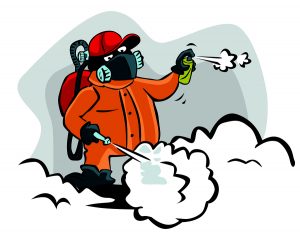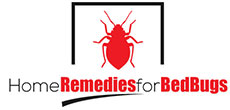You are supposed to be sound asleep on your bed but the sudden infuriating itching on your back and limbs keeps you from having a good night sleep. To add to your frustration, you wake up only to see reddish round spots on different parts of your body while the burning sensation still lingers. Now, imagine experiencing this dilemma every night. Quite maddening, right?
Chances are, you may not be the only one inhabiting your bed. It is highly likely that your bed also accommodates other creatures aside from you, let’s say, bed bugs.
 Killing bed bugs have posed greater challenge than dealing with other pesky insects out there. Bed bugs have an amazing ability to hide themselves which makes them more difficult to find. They discreetly move and travel from place to place which makes them harder to detect. They have evolved over time that they have developed resistance to most insecticides. This resistance has given rise to their resurgence in bigger population.
Killing bed bugs have posed greater challenge than dealing with other pesky insects out there. Bed bugs have an amazing ability to hide themselves which makes them more difficult to find. They discreetly move and travel from place to place which makes them harder to detect. They have evolved over time that they have developed resistance to most insecticides. This resistance has given rise to their resurgence in bigger population.
So, if insecticides don’t work, are there any alternatives to get rid of them permanently?
There are actually several alternative methods to get rid of bed bugs. One of the most simple and easy-to-do methods is the use of heat in killing these pesky bugs. Insecticides may contain harmful chemicals that can jeopardize you and your family’s health. That is why it is important to take extra care and precaution in handling these products. Heat treatment, on the other hand, does not employ the use of any chemicals that can harm your home. The potency of the active ingredients used in bed bugs sprays can only last for 24 hours. Due to the developed resistance to insecticides, you will need more than a week or two to completely annihilate an entire population of bed bugs. With heat treatment, you don’t have to worry about the risk of building bugs’ resistance. Every living creature is susceptible to heat and it is impossible for bed bugs to withstand this type of treatment.
We are going to look into how the process of heat treatment is carried out and how much the treatment costs.
How bed bugs heat treatment is done
Using bed bug sprays and powders requires applying the product on contact with the bugs. This means you have to locate the places where they are hiding and then spray the product right there. Due to their tiny (almost invisible) size, they can fit into even the smallest cracks or crevices on the ceilings and walls. This is where heat becomes indispensible. To grasp the concept of heat treatment, take a sauna room for instance. Every corner of the sauna room is filled in with heat, leaving no space for heat to escape. The same principle is applied into your own home. There is no need to pinpoint their exact hiding spots, you just let the heat fill every space of your home.
To do this, you need to have a bed bug heater installed in your home. You will need to set the temperature high enough to kill bed bugs. Heating the room up to 140°F kills bugs in all stages – adults, nymphs and eggs – in 90 minutes. You can maintain this lethal amount of heat for up to three hours to make sure not a single bug survives.
Since you are applying an intense amount of heat, there are important reminders that you need to remember to guarantee 100% success rate in getting rid of bed bugs while keeping you and your family safe.
- After setting up the heater, immediately stay out of the house. This is definitely not your typical sauna so keep all members of your household out of your home during heat treatment. When exposed to high temperature, bed bugs instinctively come out from hiding to find someplace cooler. If you are still in the room during that time, there is a chance that they might cling to you and you’re giving them a great escape when you walk out of the house.
- You may hire a professional to administer and monitor the process if you are skeptical of doing it on your own.
- Close all doors and windows tightly to prevent heat from escaping. Carefully inspect your house for possible cracks or holes and seal them thoroughly. Avoid going in and out the house during the treatment. Doing so doesn’t only allow heat to escape but you’re also giving the bed bugs a ride to escape out of the heated room.
- Take out any explosive or flammable materials that may ignite or explode during the process.
- Leave the room as it is. Except the explosive or flammable materials, do not take anything out of the house during the process. Bed bugs may be dwelling in the carpets, rugs, linens, sheets, curtains, absolutely on almost anything inside your home. Let everything stay under extreme heat and let the treatment kill every single bed bugs dwelling on them.
- Be patient. You only need to get out of the house for at least two hours and wait for the heat to do the job. This is pretty quick compared to other bed bug control alternatives. Let’s take freezing for example. Extreme cold also kills bed bugs the same way an intense heat does. Setting up freezers to 0°F allows freezing temperature to fill every space of the room. However, freezing treatment needs 3 to 4 days to kill every single bed bug. Whereas you can achieve the same result in just 3 hours with heat treatment.
How much does the treatment cost
The most important equipment you need in this treatment is the bed bug heater. The better question should be ‘how much does a bed bug heater cost?’. The cost of a unit ranges from $4,000 to $15,000. If you have a big house with multiple rooms, a single unit may not be enough to supply heat throughout the house. In order to make the heat treatment work, it is highly recommended that you install one heater per room. Count the number of rooms you have, including the living room and kitchen, and then do the math.
If you have a tight budget and can’t afford to spend a total of $50,000 for a set of heaters, your best option is to look for someone who owns the machines and rent them out. There are several bed bug heat system rental services that you can look up online who also offer professional pest control services. You get to rent the machine and the professional who will administer the process, in one package.


